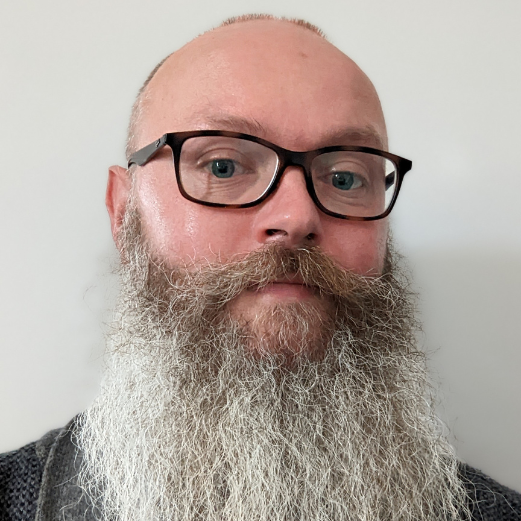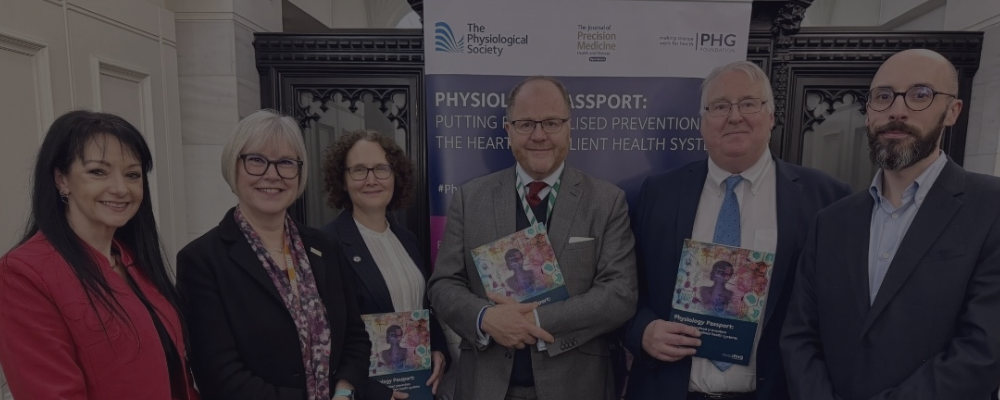
An investigation into scientific writing
By Dr Matthew Hardy, University of Bradford, UK
Paton Historical Studies Fund recipient and Member of Physiology News Advisory Group
Each year, we award up to £1,000 for projects that promote the study of the history of physiology, including notable people, experiments or discoveries. Matthew Hardy, Paton Historical Studies Fund awardee and Society member, tells us more about the grant and his project.

If there is a quote that encapsulates why I applied for the Paton Historical Studies Fund it is this: “Writing is an art. But when it is writing to inform it comes close to being a science”. The quote is attributed to Robert Gunning, an American businessman who had interests in newspaper and textbook publishing. Incidentally, this is the same Gunning who, in the 1950’s, developed the Gunning Fog Index: a formula that estimates how many years of formal education a reader may need to understand a text1. Or, as may apply to a great deal of scientific writing – how difficult is this text to understand?
The Paton Historical Studies Fund itself originates as a consequence of the generosity of Sir William Paton FRS (1917-93), who donated £5000 (a sum matched by The Society) in 1990; this was to finance work aimed at improving our knowledge of the history behind seminal discoveries in physiology. What is hopefully apparent reading this, is that the project I proposed to The Physiological Society would investigate historical aspects of writing in physiological disciplines.
At the time I applied for the Paton Historical Studies Fund, I was already entrenched as a teaching-focused academic. Although this was partly by design (I consider teaching to be a boon) I missed the passion and the focus that project-driven research can often inspire. Whilst there will be many reading this thinking there are plenty of opportunities for research even for the teacher (and I wholeheartedly agree), I had not yet found a way to embed such projects into my professional life. In effect, I had lost my reliable research tools (a microscope, an amplifier and regular opportunities to gently stab cells with glass electrodes) and had not yet become proficient at utilising a new toolkit: student feedback, student results, teaching labs, student outcomes and the content I was teaching with.

Matthew Hardy outside the British Library, his main sight of research and wonder for his historical exploration.
As it happens, a stint working as an academic skills advisor a number of years ago opened my eyes to whole new areas within Bioscience Education, including teaching students techniques and good practice in their approaches to academic writing and science communication. I already had a long standing interest in language and writing (I have now been a member of the Leeds Writers Circle for nearly 15 years) and so found this role invigorating and was keen to expand it into my future practices. Since my time working in the library, I have embedded lectures and workshops within a number of biology and health-related programmes at the University of Bradford with writing skills as a focus. Thus, I have become familiar with conventional approaches to scientific writing and am in a position to question their usefulness and history.
One example of such a tradition that most science writers are familiar with, is the notion that using third person, passive voice (‘The experiment was done by…’) is the correct approach when writing the methodologies of research articles. Yet, I could not see a reason to suggest that this format lent any ease to understanding the text compared to using an active voice (‘We did the experiment by…’). Furthermore, my own memories of reading older journal articles, suggested that 100 years ago the use of third person was less common – although this was purely based upon my own, very unscientific, observations. Of note, there is evidence suggesting that in modern-day research articles, the use of active, first person is becoming more common2. Thus, it seemed reasonable to ask the question: How have scientific writing styles changed over time?
Having identified the area in which I hoped to research, I then identified a problem. To where might I apply for funding to undertake such research? Of course, the answer was The Physiological Society’s Paton Historical Studies Fund, but on first inspection this did not look to be suitable. My knowledge of previous recipients, combined with a cursory glance at previous award winners suggested that perhaps, a study of writing was not what this award was for. Indeed, previous recipients focused their projects on seminal physiological discoveries and their discovers (see for example, the work by David Miller highlighting the role of Sydney Ringer, the ‘father of physiological saline’ and the first to recognise the role of calcium in cardiac muscle contraction3,4). The only way to ascertain if the Fund was suitable for my proposed project was to ask.
What followed was one of the most informative and humbling meetings of my career. Through correspondence between myself and the then Head of Professional Development and Engagement for The Society, Chrissy Stokes, a meeting was arranged with Dr Angus Brown of the University of Nottingham, the Chair of the History and Archives Group. I joined this meeting with the full intention of impressing with my experiences of literary practices only to discover that Angus Brown, as well as being immensely helpful, is far more knowledgeable than me in such areas. The conversation spanned not only my planned project, but also covered numerous aspects related to academic writing and even the background behind the physician Peter Mark Roget (of Roget’s Thesaurus fame). This meeting served to both be inspiring, as well as confirming that my idea had promise. Thus followed my application to the Fund.
As I write this, I am methodically working my way through analysis of the texts used in my study. For data of a qualitative nature, I have exclusively used articles from The Journal of Physiology, which helpfully has made every volume accessible electronically. However, I also have copies of numerous texts from academic and scientific writing guides dating back to 1952. These were obtained from trips to the British Library, which is what I used my funding for.
When I designed my initial project I had considered this to be a relatively simple, if time-consuming process. I would systematically sift through a corpus of literature that included articles from every decade since The Journal of Physiology’s inception (1878). I would pair this with related newspaper articles that could be linked to the research at the time. However, upon my first visit to the British Library, I quickly discovered that scouring the newspaper archives using a microfilm reader was too time consuming to be of use (and that older newspapers made scant mention of anything related to science). Conversely, my search for writing guides was more fruitful and quick; one of the wonders of modern technology is that you can take copies of book pages very rapidly with a mobile phone. Through my research, I also began to appreciate the methods undertaken by applied linguistics researchers: I have started to explore the use of AI applications to scour texts for linguistic markers including attitude markers (e.g. adequate, noteworthy, misleading), boosters e.g. (always, undoubtedly), engagement markers (e.g. consider the following, you can see..), hedges (however, similarly) and self-mentions.
I mention these techniques as a means of segueing to my conclusions. I believe the project that I have undertaken to be relatively unique amongst physiology researchers. Whilst it has not progressed exactly as planned (how many research projects do?) the deviations have opened my eyes to an entirely new branch of research and new interdisciplinary methodologies. I have met and discussed topics of interest to me with new peers, as well as being provided the opportunity to explore the wonders of the British Library. I am not sure I could have obtained the funding for such a project from any other source. If you are interested in the history behind physiology, or want to expand your research horizons, then I thoroughly recommend applying for the Paton Historical Studies Fund.
References
1.Gunning R. The Technique of Clear Writing.: McGraw-Hill., 1952.
2. Gillaerts P, Van de Velde F. Interactional metadiscourse in research article abstracts. Journal of English for Academic purposes 2010;9:128-39.
3. Miller DJ. Sydney Ringer; physiological saline, calcium and the contraction of the heart. The Journal of physiology 2004;555:585.
4. Miller DJ. A Solution for the Heart: A brief biography of Sydney Ringer (1835-1910) –revised 2014, 2020. The Physiological Society, 2007. https://bit.ly/38Im1B0.



